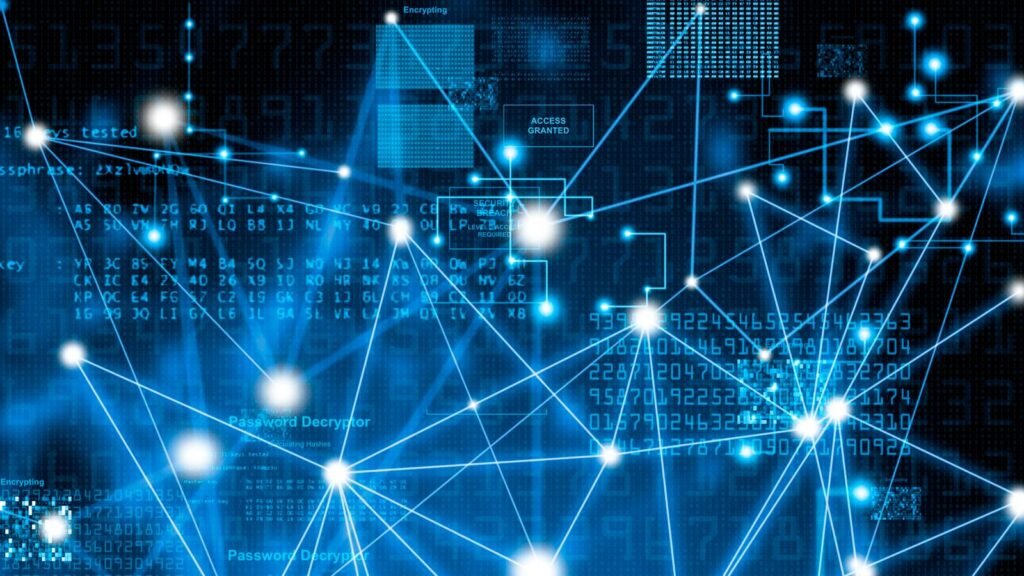What is Iaoegynos2?
Iaoegynos2 is an advanced technology that serves a critical role in its respective field, characterized by a unique blend of functionalities and features that set it apart from other similar systems. At its core, Iaoegynos2 is designed to enhance operational efficiencies through innovative processes and techniques, providing significant value to users across various industries. The primary functionalities of Iaoegynos2 include automated data processing, real-time analytics, and robust user interfaces that facilitate seamless interactions.
The defining characteristics of Iaoegynos2 lie in its adaptability and scalability. Unlike many existing technologies, Iaoegynos2 can be tailored to meet the specific needs of different applications, allowing users to customize various features according to their operational requirements. This flexibility is a key differentiator, as it ensures that organizations can optimize their resources and workflows effectively using Iaoegynos2.
Moreover, Iaoegynos2 employs cutting-edge algorithms and machine learning principles to deliver insights that were previously hard to achieve. These capabilities not only enhance decision-making but also contribute to predictive analysis, allowing businesses to anticipate trends and mitigate potential challenges in advance. Furthermore, Iaoegynos2’s architecture promotes interoperability, which means it can easily integrate with existing systems and platforms, ensuring a smooth transition and maximizing return on investment.
In essence, Iaoegynos2 represents a significant advancement in technological applications, demonstrating how refined systems can lead to enhanced productivity and a better understanding of complex issues. Its emphasis on user-centric design and functional versatility is what makes Iaoegynos2 particularly important in the evolving landscape of today’s technological developments.
Current Applications of Iaoegynos2
The integration of Iaoegynos2 has found a multitude of applications across various industries, significantly enhancing operational efficiencies and driving innovation. One notable domain where Iaoegynos2 is being utilized is in healthcare, where it facilitates advanced data analysis for patient management. For instance, a leading hospital in Europe has implemented Iaoegynos2 to optimize patient workflows, resulting in reduced wait times and improved patient outcomes. The technology allows for real-time monitoring of patient vitals, enabling quicker decision-making and personalized care pathways.
In the realm of finance, Iaoegynos2 is revolutionizing risk assessment and fraud detection processes. Financial institutions have adopted this technology to analyze large data sets for transaction patterns that deviate from norms, helping to flag potential fraudulent activities more efficiently than traditional systems. A case study involving a major bank showcased a 30% reduction in false positives in fraud detection, thanks to the analytical capabilities of Iaoegynos2, which translate data into actionable insights.
The manufacturing sector is also reaping the benefits of Iaoegynos2, particularly in predictive maintenance. By employing Iaoegynos2, companies can analyze critical machinery data to foresee equipment failures before they occur. For instance, an automotive manufacturer utilized this technology to significantly decrease downtime across their production lines, leading to a 20% increase in operational efficiency. The data-driven approach afforded by Iaoegynos2 allows for timely interventions that minimize costs associated with unexpected breakdowns.
Moreover, in the realm of marketing, Iaoegynos2 enhances customer engagement strategies by analyzing consumer behavior and preferences. This insight enables companies to tailor their marketing campaigns more effectively, improving their return on investment. The practical applications of Iaoegynos2 are varied and impactful, showcasing its potential as a transformative force across industries.
Challenges and Limitations of Iaoegynos2

The development and utilization of iaoegynos2 technology are not without their challenges and limitations. Organizations striving to implement this emerging technology often encounter a variety of hurdles that can significantly hinder progress. A paramount concern is the technological complexity associated with integrating iaoegynos2 into existing systems. The intricacies involved in adapting existing frameworks to accommodate new functionalities can lead to extended timelines and unforeseen costs.
In addition to compatibility issues, the financial implications of deploying iaoegynos2 can be substantial. Initial investments in hardware, software, and training for staff can strain budgets, particularly for smaller enterprises. Moreover, ongoing maintenance costs and the need for continuous updates to align with evolving standards further escalate expenses. Such financial burdens can deter organizations from embracing iaoegynos2, limiting its adoption primarily to well-resourced entities.
Another significant challenge lies in the data security risks associated with iaoegynos2 technology. As with any advanced system, vulnerabilities may emerge that expose sensitive information to potential breaches. Organizations must invest in robust security measures to safeguard against these risks, which can further compound costs and complicate implementation strategies. The necessity for comprehensive cybersecurity frameworks underscores the importance of careful planning and resource allocation.
Furthermore, the adaptability of iaoegynos2 remains a topic of concern. As the technology continues to evolve, users may face difficulties in keeping up with the rapid changes. This can result in technology becoming obsolete or less effective as new iterations are introduced. In light of these varied challenges, it is crucial for stakeholders to carefully consider the limitations of iaoegynos2 before fully committing to its implementation. These factors will undoubtedly influence the trajectory of future developments and the overall effectiveness of iaoegynos2 in practical applications.
The Future of Iaoegynos2: Trends and Predictions
The future trajectory of iaoegynos2 is poised to be influenced by several emerging trends and advancements in technology. As industries increasingly recognize the potential of iaoegynos2, its applications are likely to expand, integrating more seamlessly into various sectors such as healthcare, finance, and education. This integration will not only enhance operational efficiencies but will also pave the way for innovative solutions tailored to address complex challenges.
One significant trend anticipated is the convergence of iaoegynos2 with artificial intelligence (AI) and machine learning technologies. This relationship will facilitate the development of intelligent systems that can analyze vast amounts of data, drawing actionable insights that support decision-making processes. As a result, organizations may experience improved predictive capabilities, enabling them to anticipate market shifts and respond proactively.
Additionally, ongoing research is expected to lead to more robust iaoegynos2 frameworks. These frameworks will likely incorporate advanced algorithms that enhance data processing and analysis, further solidifying iaoegynos2’s standing within various industries. The growth of cloud computing and the Internet of Things (IoT) will facilitate the collection of data, making iaoegynos2 an invaluable tool for real-time analytics.
Moreover, ethical considerations surrounding data use and privacy will become increasingly paramount as iaoegynos2 continues to evolve. Stakeholders must navigate regulatory landscapes while ensuring the responsible deployment of this technology. The focus on transparency and ethical standards will dictate not only the acceptance of iaoegynos2 in society but also its effectiveness as a transformative tool.
about iaoegynos2In conclusion, the future of iaoegynos2 appears promising as it embraces advancements in technology while addressing ethical complexities. By adapting to these changes, iaoegynos2 may significantly impact industries and society, paving the way for innovative solutions and enhanced operational efficiencies.


